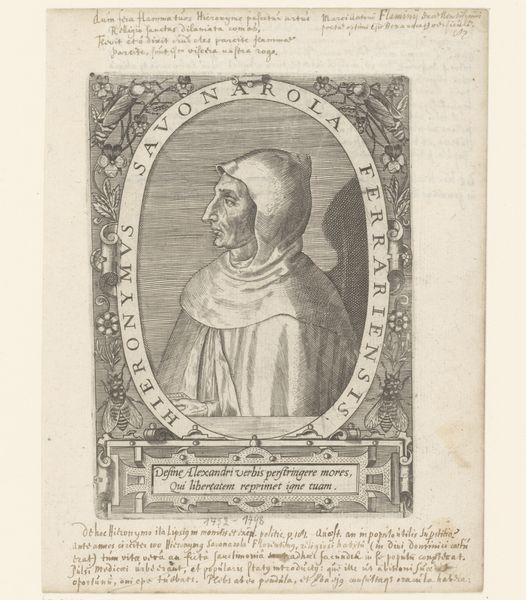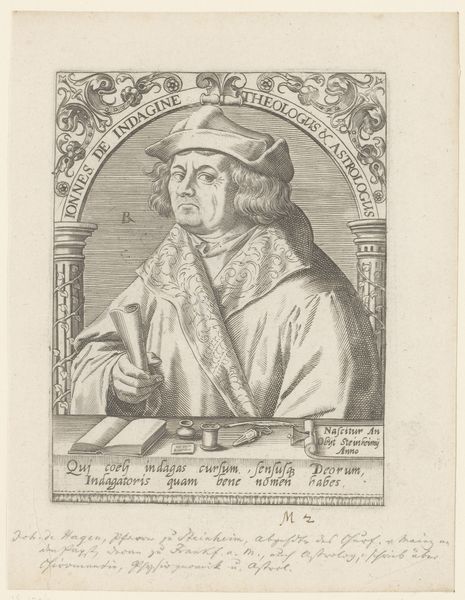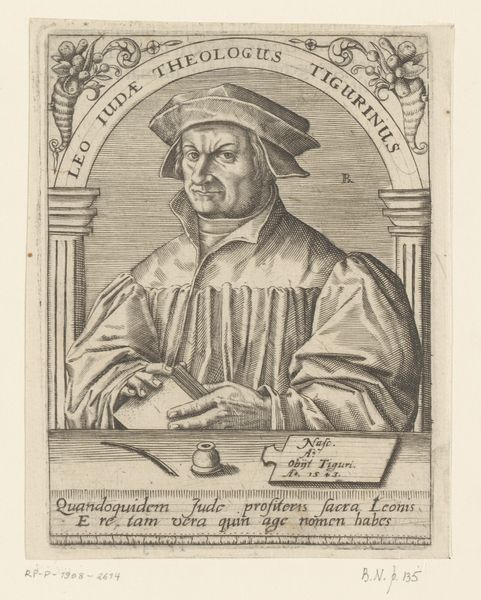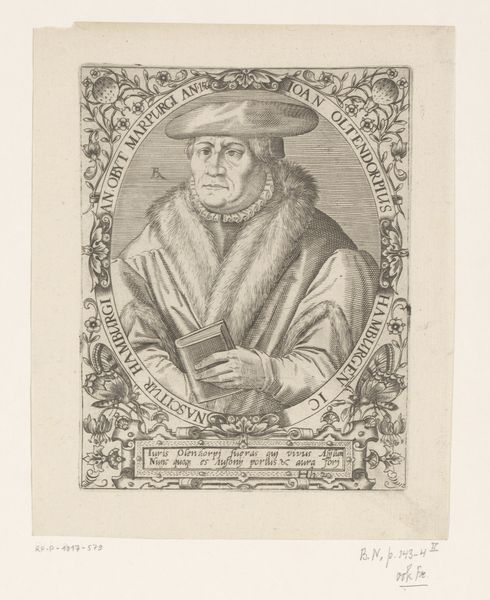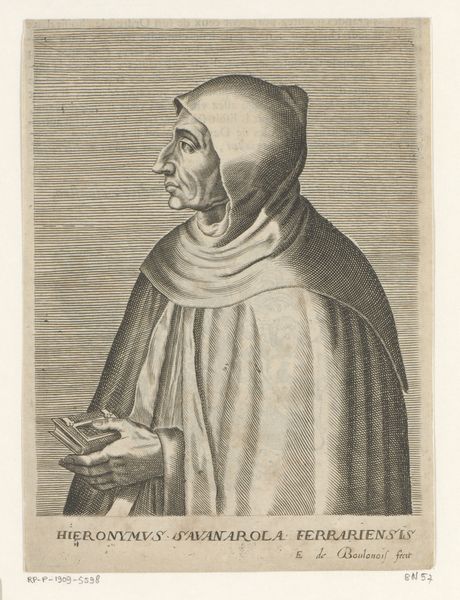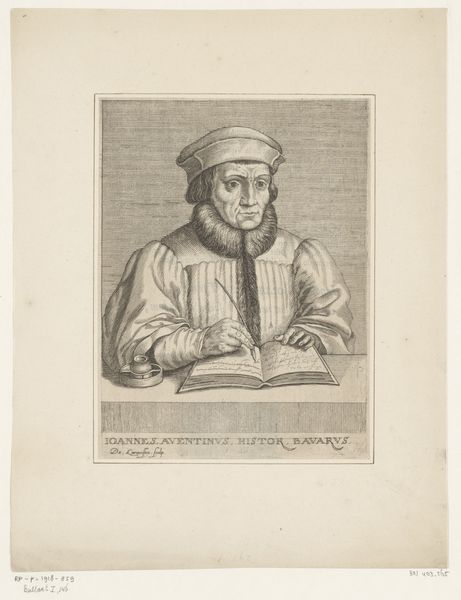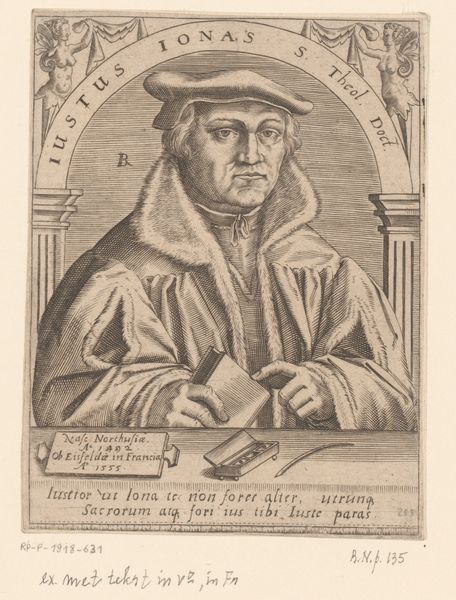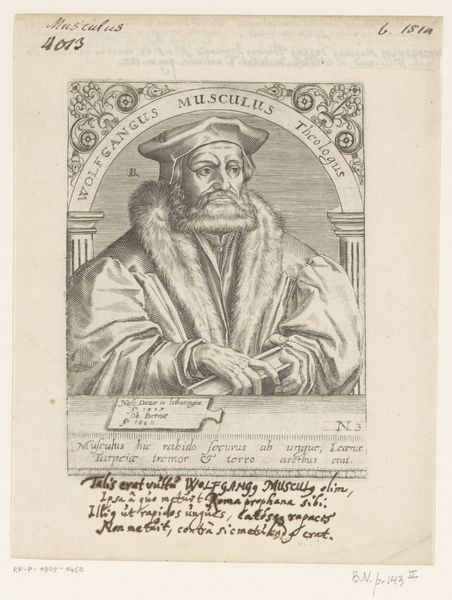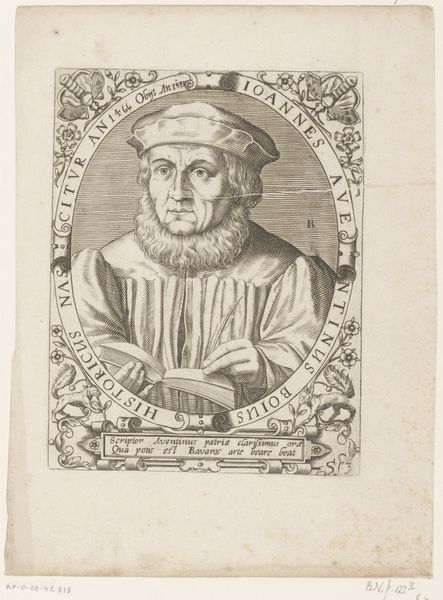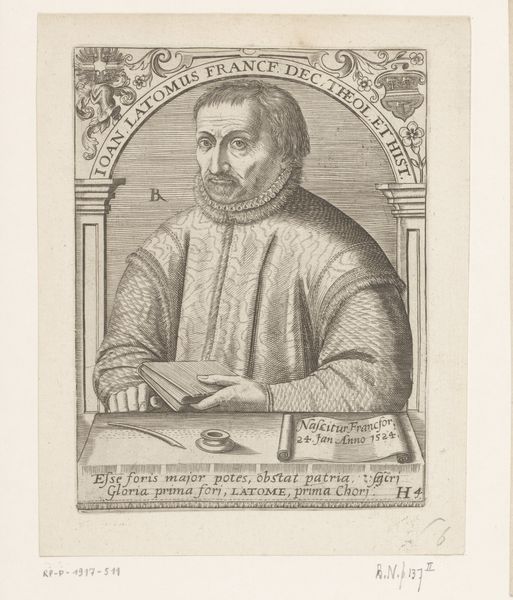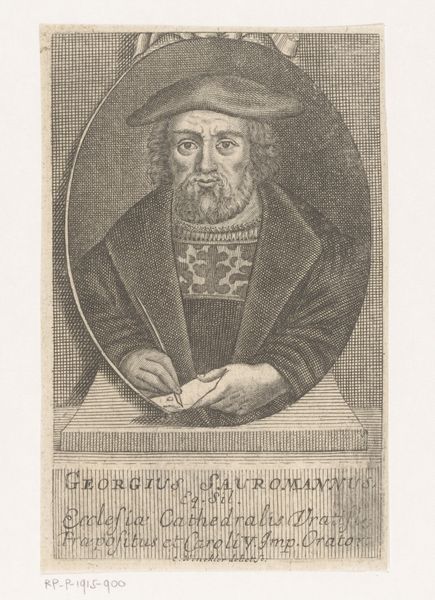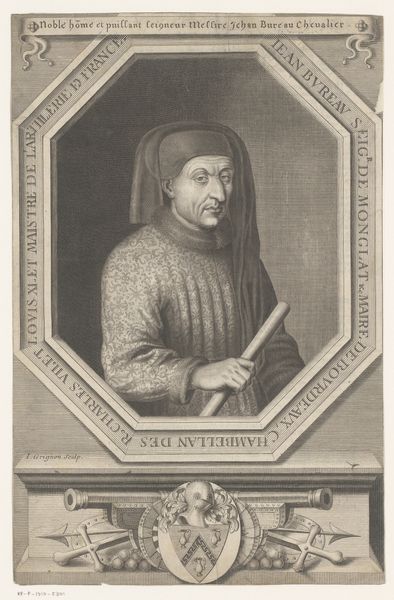
print, paper, engraving
#
portrait
#
neoclacissism
# print
#
old engraving style
#
paper
#
15_18th-century
#
history-painting
#
italian-renaissance
#
engraving
Dimensions: height 315 mm, width 211 mm
Copyright: Rijks Museum: Open Domain
Curator: Here we have a print from 1764 entitled "Portret van humanist Piero Vettori". It's an engraving on paper of the Italian humanist Piero Vettori. Editor: There's a quiet strength in the image. Even though it’s just a print, there is great presence. The subject holds a book and there's an air of scholarly wisdom. It feels... noble, almost stoic. Curator: That assessment rings true. Vettori, born in Florence in 1499, was indeed renowned as a humanist scholar. His editions of classical texts were instrumental in shaping Renaissance intellectual life, which became part of Florentine power during this period. Consider how portraiture functions to disseminate power structures and historical narratives during periods of empire and nation building. Editor: It's interesting how this print, created much later than Vettori's life, keeps his memory alive, especially given the revival of interest in classical antiquity in the late 18th century and neoclassical taste at this time. It acts almost as a historical document but shaped to serve the culture of Antonio Zaballi’s time. Are we perhaps idolizing a figure from the past for political gain? Curator: The choice of engraving as a medium is relevant here, making it reproducible and shareable. These printed portraits like "Portret van humanist Piero Vettori" offered visual representations that were distributed among collections to establish a social network in order to shape society itself. Also the choice of a simple book in Piero’s hand speaks more of knowledge through access to texts. Editor: So the distribution mechanism further solidifies social relationships in learned circles... and perpetuates specific perspectives on knowledge. Knowing this work is based on the engraving technique reinforces the fact that it exists in many copies with slight variants, so we could question authenticity and how cultural narratives might shift according to the print’s placement, if not ownership. Curator: The print captures not only Vettori's likeness, but the aspirations and ideals that Neoclassicism sought to revive: rationality, civic virtue, and a return to classical standards. But beyond the politics and power networks that prints perpetuate we shouldn't neglect to think about those who had no access to it: it speaks loudly about elitism through a cultural lens. Editor: Well said. It is really an image deeply rooted in history, shaped by both its subject and the artistic movements that followed, even up to our current time.
Comments
No comments
Be the first to comment and join the conversation on the ultimate creative platform.
